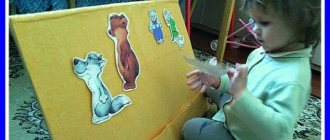Methods of labor education for preschool children
In kindergarten, the initial foundation of hard work is formed. Educators teach children to engage in activities that are beneficial to society. Training must be carried out in a playful way, since this type of activity is the leading one for preschoolers.
Children need to be taught from an early age the need to help their parents
You need to raise a child gradually, as he will have to master several stages. He will have to develop skills, be able to set goals, plan his work and achieve results.
Important! At preschool age, children have only external motivation, i.e. they need financial incentives.
At preschool educational institutions, teachers help children master the first tools of labor. The teacher also sets goals and monitors their achievement - this is good to develop through self-service skills.
The role of family traditions
The position of an adult when teaching a child work activities is helping. For example, if a baby asks to lace his shoes, then the parent does not need to sit him on a chair and do it for him. The right thing to do would be to show him how it’s done and help him cope with it himself.
It is necessary to develop social and everyday skills in the child
Nurturing hard work in preschoolers depends on various factors. Mastering simple skills begins with observing an adult. If parents often clean, wash dishes, etc., then the baby will begin to try to repeat after them.
At the age of 3, the child develops the need “I myself.” It is from this moment that you can begin training.
The relevance of the correct position of an adult
Educators can offer the brochure “Labor education in the family”; the consultation for parents contains practical advice and common mistakes. Moms and dads should systematically teach their children to do housework.
Some adults mistakenly ask a child to help only upon express request. This attitude interferes with proper teaching. Sometimes parents take an overprotective position. They do everything for the child, suppress his independence and initiative.
Close people should help the child cope with various tasks. For example, let him dress on his own and get ready for a walk.
Important! Don't expect your child to do it perfectly the first time.
Teaching children work skills begins with demonstrations of action. The parent should provide support for the slightest attempts to do something independently. For example, wipe the floor. Even if a child just rubs the dirt, initiative should be encouraged.
If an adult begins to overprotect the child, he will quickly get used to being lazy and will have no desire for personal activities.
Labor education of preschool children in kindergarten
Practical advice
It’s not for nothing that teachers develop consultations for parents “Labor education for preschoolers.” It is this period that is very important for the formation of the first ideas about social and everyday skills.
When to start
Not only when being in a group, a child must follow the rules. At home he also runs errands and does various jobs. From an early age, he is taught to put toys in place, clean up after himself, and help his parents.
In kindergarten, teachers also develop independence, but this is not enough. Therefore, parents are also full participants in the process.
Education of hard work in preschool children takes place under the supervision of adults. They are the ones who help develop habits and skills. This process takes several years, so you need to do it from the baby’s first year.
Important! There are no uniform teaching methods, but it is worth adhering to two principles - consistency and systematicity. In this case, you will be able to achieve your goals.
How to teach a preschooler to work
In the first year of a child's life, parents gradually teach him to put toys in their places. To do this, he is shown how to put them in a box or container. This needs to be done in a playful way.
After completing the task, the child must be encouraged
Educational institutions may hold parent meetings on “Family Traditions and the Child’s Ability to Work.” All this is aimed at ensuring that adults receive practical advice on parenting.
Before starting kindergarten, children must learn to care for themselves. To do this, they are taught to wash their face, brush their teeth, comb their hair, get dressed, etc.
Important! First, the parent shows how to do it, then helps to carry out the actions.
Different methods of labor education are aimed at achieving one goal - developing the need to carry out useful activities. To do this, parents ask for help in arranging washed dishes, wiping off dust, etc.
The tasks should be age appropriate. The components of activity are goal, motive, means and result. The education process is built on the basis of them. For example, the child is told that toys need help and need to be put in their places.
A tool is something that helps to carry out an activity. The child needs to use cutlery to eat. Therefore, he will need different skills and abilities in life.
The educational potential of the labor activity of preschool children allows us to consider it useful for society. What a person will be like in the future depends on this. He must have the right attitude towards work.
A person’s success directly depends on hard work
It’s worth working with schoolchildren a little differently. From the first grade they can already be assigned different tasks. It is better to write them all down in a list that will help him remember everything.
Labor activity in the preparatory group
Important! Developing the habit of studying also requires a special approach. Therefore, if a child is assigned to write an essay, the parent can tell him where to look for information. But don't try to do the job for him.
Consultation “What kind of work is available to children” consultation on the topic
Consultation for parents
“What kind of work is available to children”
All parents understand well how to instill in their child basic work skills, because work develops personal qualities - responsibility, frugality, perseverance in achieving goals.
It is very important and useful for parents to encourage and strengthen their child’s desire for independence in every possible way. There is no need to do for a child what he can do himself. When going to the nursery, the child must dress himself, adapt a shelf especially for him so that it is convenient for him to take a comb, a towel, and a toothbrush.
At first, adults would like to do everything themselves. But you need to understand that with the provision of greater independence in actions, the need for labor efforts will be formed, and a feeling of involvement in common family affairs will arise.
When teaching a child to work, you need to be consistent and demanding, first of all towards yourself. A constant example of hard work and accuracy will allow you to be demanding of your child.
The direct participation of the child in family affairs is an indispensable condition for instilling hard work in children. The child must have some responsibilities. From an early age, you need to instruct him to: fold his clothes, put his shoes neatly, lay out spoons before eating. Learn to take care of yourself: wash, get dressed. Of course, it will happen that the child gets his sleeves wet and spills water, and folds his things in such a way that they have to be rearranged. Before requiring a child to perform an assignment efficiently, he must be taught certain actions and shown their sequence. After all, it seems like simple things - soaping your hands, drying them with a towel, but the baby can’t do it. Teach him all these little things patiently.
Later, you can demand that the child maintain order in his play area. From an early age, teach them to prepare their clothes in the evening, check that they are not torn and that everything is folded in order. All these seem to be little things that are unworthy of attention, but it is from such little things that the neatness, organization, and composure that a child needs in his further education at school begins to develop.
The child should have a range of responsibilities: put away toys, make the bed, help set the table and put away the dishes. The child makes his own, even if still small, insignificant contribution to the common cause. After all, the main thing is not that the baby’s help is not yet perceptible, but to accustom him to the idea: dad and mom work, and I must work. This begins the feeling of belonging to the family team, responsibility towards it, and the child’s working communication with us, the parents.
Be attentive to children's crafts and store them. And even if they are not so beautiful, so much effort has been put into them. There is no need to throw away crafts or gifts that a child has made with such difficulty and love; he should see that the result of his work is worthy of respect.
Whatever the forms of work in which parents engage their children, they must comply with the following requirements:
1. Work should be meaningful for the child.
2. Work must be feasible for the child, both in the sense of the stress that requires its implementation and in the sense of responsibility.
By all means, it is necessary to instill in the child and establish in his mind the idea that by performing a work task well and carefully, he benefits everyone, that he becomes an accomplice of adults in their working life, a useful, necessary member of the family.
The meaning of labor.
Parents often report with disappointment that their children do not like and do not know how to work, are reluctant to carry out instructions from their elders, and care little about looking after themselves to the best of their ability; they try to shift any work to mom, dad, and grandma.
What's the matter? Are these children naturally lazy? Of course not! The main reason is that parents did not instill in their child, from early childhood, the skills of hard work, interest and respect for work models.
It is necessary to teach a child to work from an early age, to develop useful skills, and the ability to cultivate a true love of work.
A variety of work activities, accessible by age, causes physical stress in the child, increases vital activity, and strengthens his body. In the process of labor, the child develops muscles, especially the hands, the improvement of which is vital.
A good example of parents in home and industrial work has the most positive impact on children. Instilling in children the necessary work qualities: dad and mom should constantly be a model for their behavior. If adults do not, for example, put things in their place or perform family service responsibilities, it is unlikely that they will be able to instill these habits in the child.
From the age of 4-5, children become especially interested in the work of their parents. You need to tell children about your work, teach them to appreciate the work of adults, this raises the authority of dad and mom.
Parents often have difficulty teaching their children to serve themselves and put away their toys. To do this, parents need a demanding tone of address, help and control, approval and accuracy in work; all this is of great importance for labor education.
Types of labor.
In a family, children participate in various types of work.
Self-care: dressing, undressing, making bed, making toys, taking care of your own clothes and shoes
Household work: helping adults in cleaning the apartment, putting order in a closet or table drawer, wiping dust, cleaning the room with a vacuum cleaner, washing tea utensils, setting the table; participation in food preparation - washing vegetables and fruits, sorting berries, preparing salad, making pies, dumplings from ready-made dough; washing and ironing small items; making small purchases in the store.
Manual labor: making toys from paper, wood, natural and other materials (matchboxes, wire, threads); repair of toys, books (with the help of adults); sewing clothes for dolls, embroidery, crocheting and knitting.
Labor in nature: caring for indoor plants: watering, loosening, wiping dust and spraying leaves; caring for indoor animals: cooking and feeding (with the help of adults, walking; sowing oats (for a parrot, turtle, canary); growing seedlings for planting in the garden, in a flower garden; preparing beds for planting, planting seedlings, preparing seeds.
How to manage a child's work life.
Adult:
1. Determines the goal of work for the child and motivates it.
2. Shows and explains work techniques, gives advice, puts forward requirements for technology, quality of work, and pace of work.
3. Includes the child in his work, sets an example of a conscientious attitude to work, helps with advice, questions, and provides practical assistance in case of difficulty.
4. Evaluates the child’s behavior, his work skills, efforts in terms of the quality of work performed, reminding him of the goal and direction of work.
5. Read works of fiction to your child about the work of adults, organize observation of work activities in the immediate environment, look at paintings reflecting the work of people, talk with your son or daughter.







